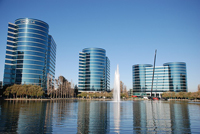 Mike Judge’s HBO series Silicon Valley has earned a lot of commendation for being an accurate spoof of tech culture, so accurate that even those of us who are being lampooned can’t help but laugh when we see ourselves and our colleagues reflected in the characters onscreen. A big part of the show’s appeal is in how extensively well-researched it is, but that’s not to say that they don’t tweak the truth here and there in service of the story (or just a good joke). Here’s what the show gets right and wrong about the real Silicon Valley.
Mike Judge’s HBO series Silicon Valley has earned a lot of commendation for being an accurate spoof of tech culture, so accurate that even those of us who are being lampooned can’t help but laugh when we see ourselves and our colleagues reflected in the characters onscreen. A big part of the show’s appeal is in how extensively well-researched it is, but that’s not to say that they don’t tweak the truth here and there in service of the story (or just a good joke). Here’s what the show gets right and wrong about the real Silicon Valley.
What Silicon Valley Gets Right
The show’s lampoon of tech culture is a little exaggerated, but the way it presents the technology itself is surprisingly precise. Mike Judge actually has a background in tech, and the writing staff frequently checks with renowned developers, mathematicians and researchers in order to ensure that the show is accurate, or at least close enough to be plausible. One of the best jokes in season one has to be the “Beautiful Mind” moment wherein the guys at Pied Piper accidentally work out a new algorithm through an extensive conversation on, well, we don’t want to spoil anything, but the show’s writers actually contacted researchers and put together a research paper on their findings (Warning: Not exactly safe for work).
The show’s devotion to believability is so intensive that they’ve actually made real-life progress in the industry. The Weissman Score is frequently referred to on the show, and it rates how much data can be stored in proportion to how much can be compressed. It was actually developed by Vinith Misra, a grad student, and Tsachy Weissman, a Stanford professor, for the show itself, and is now used within the industry at companies like Dropbox.
What Silicon Valley Gets Wrong
If Silicon Valley can be said to get anything dead wrong, it would have to be the business proceedings at startups like Pied Piper and corporations like Hooli (the show’s stand-in for companies like Google and Apple). A season 2 plot thread involves a split decision at a meeting of board members leading to an empty CEO chair. This is a great plot twist for a story, but no experienced venture capitalist would fire their CEO without already having their replacement named, few meetings with the board of directors end in a split decision, and no serious meeting like this is going to take place without a corporate lawyer present. The truth is, of course, that accurate representation of firing and hiring CEO’s wouldn’t make for a very funny show.
Silicon Valley has lampooned 2010’s tech culture as efficiently as Office Space lampooned 90’s office culture. Just remember that it’s a sitcom, not a documentary, and take some of it with a grain of salt.





